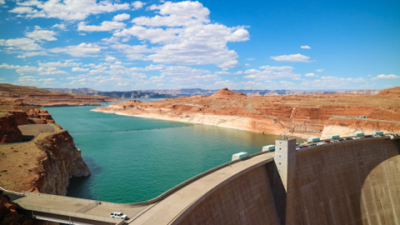Planning Future Power Systems Under Climate Extremes
This study investigates the importance of the interactions between climate change and energy system transitions for power system planning and operations. The research examines the individual and combined impacts of a Southern California heat wave and a Western U.S. drought on the historical (5% renewables) and a projected future Western U.S. power system (31% renewables). The key findings are that drought has a higher impact on energy production costs than the heat wave, the cost increases for the combined events are similar to the drought scenario alone, and interregional transfers during peak demand hours are complex and highly sensitive to extreme events and the generation mix.
This research highlights the importance of considering the compounded effects of extreme heat and drought in planning studies for evolving power systems. The study emphasizes the need for interregional coordination to respond to extreme events such as heat and drought and identifies supply-side water stress and demand-side temperature stress as key variables that need to be considered. The findings of the study can help power system planners focus on scenario development, model complexity, and computational power for improving the operational efficiency of power systems under extreme weather conditions. The limitations of the study highlight the need for further research to address the challenges faced by power systems due to extreme weather conditions.
This study evaluates the sensitivity of the Western U.S. power grid to the impact of a single drought scenario and a single Southern California heat wave scenario on generation and load, simulating two levels of variable renewable generation shares in each scenario (5% and 31%). The findings suggest that the Western U.S. responds to drought by using additional natural gas generation and to Southern California heat by leveraging the system's interconnectedness. During peak times, regional transfers are just as high in the moderate variable renewable energy (VRE) system as in the low VRE system simulated, highlighting the need for hourly interregional transfers and related transmission expansion, energy storage, or market flexibility solutions. The study demonstrates the importance of modeling water-based grid stress and extreme electricity demand scenarios, and the need to use power system models that represent regional grid interactions to design and evaluate infrastructure under extreme events. These findings are crucial in developing a risk-based approach to planning for extreme events and improving the operational efficiency of power systems under extreme weather conditions. The study provides a valuable toolset that can be expanded to incorporate other grid stressors in high-resolution power system models.

